IaaS, PaaS, and SaaS are the three most widely embraced forms of cloud service offerings, alternatively known as cloud service models or cloud computing service models.
- IaaS (Infrastructure as a Service) provides on-demand access to cloud-hosted physical and virtual servers, storage, and networking - constituting the foundational IT infrastructure for executing applications and workloads in the cloud.
- PaaS (Platform as a Service) furnishes on-demand access to a comprehensive, ready-to-use, cloud-hosted platform for the development, operation, maintenance, and management of applications.
- SaaS (Software as a Service) offers on-demand access to pre-configured, cloud-hosted application software.
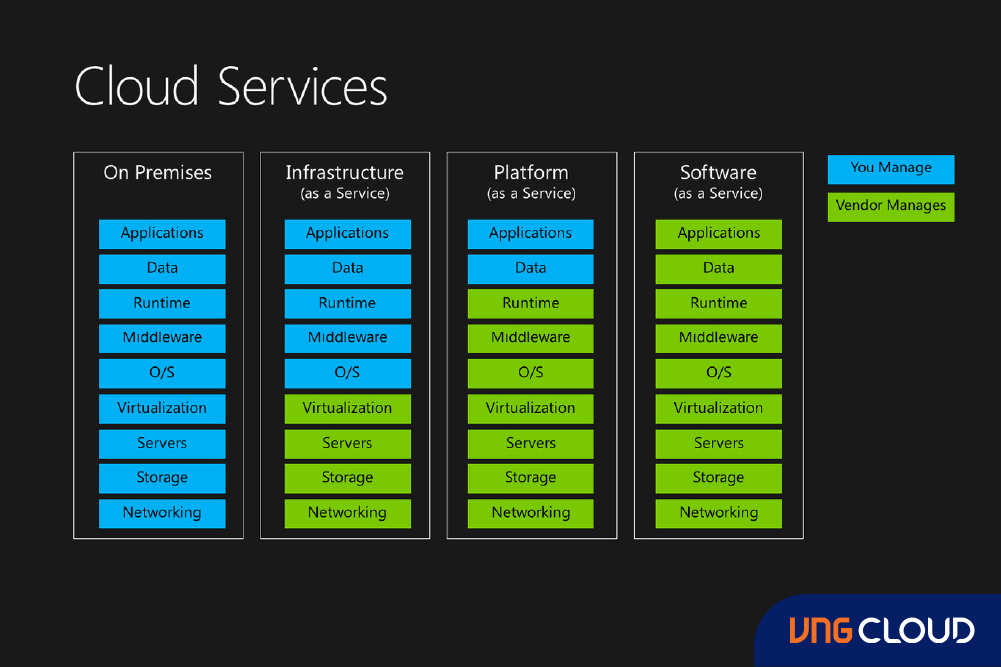
The term "as a service" signifies how IT resources are utilized within these offerings and underscores the fundamental distinction between cloud computing and traditional IT. In traditional IT, organizations procure, install, manage, and maintain IT assets - such as hardware, system software, development tools, and applications - within their own on-premises data center. Conversely, in cloud computing, the cloud service provider assumes ownership, management, and maintenance responsibilities for these assets, allowing customers to access them via an Internet connection and pay through a subscription or pay-as-you-go model.
The primary benefit of IaaS, PaaS, SaaS, or any "as a service" solution lies in its economic advantages. Customers can obtain and scale the required IT capabilities at a predictable cost, eliminating the need for extensive expenditures and overhead associated with purchasing and maintaining everything in an on-premises data center. Additionally, each of these solutions offers unique advantages beyond their economic benefits.
Infrastructure as a Service (IaaS)
IaaS provides on-demand access to computing infrastructure hosted in the cloud, encompassing servers, storage capacity, and networking resources. Customers can provision, configure, and utilize these resources like on-premises hardware. The distinction lies in the fact that the cloud service provider takes charge of hosting, managing, and maintaining the hardware and computing resources within its dedicated data centers. IaaS customers access these resources through an internet connection and pay for usage on a subscription or pay-as-you-go basis.
Typically, IaaS customers have the flexibility to choose between virtual machines (VMs) hosted on shared physical hardware (with the cloud service provider managing virtualization) or bare metal servers on dedicated, unshared physical hardware. Users can handle the provisioning, configuration, and operation of servers and infrastructure resources through a user-friendly graphical dashboard or programmatically using application programming interfaces (APIs).
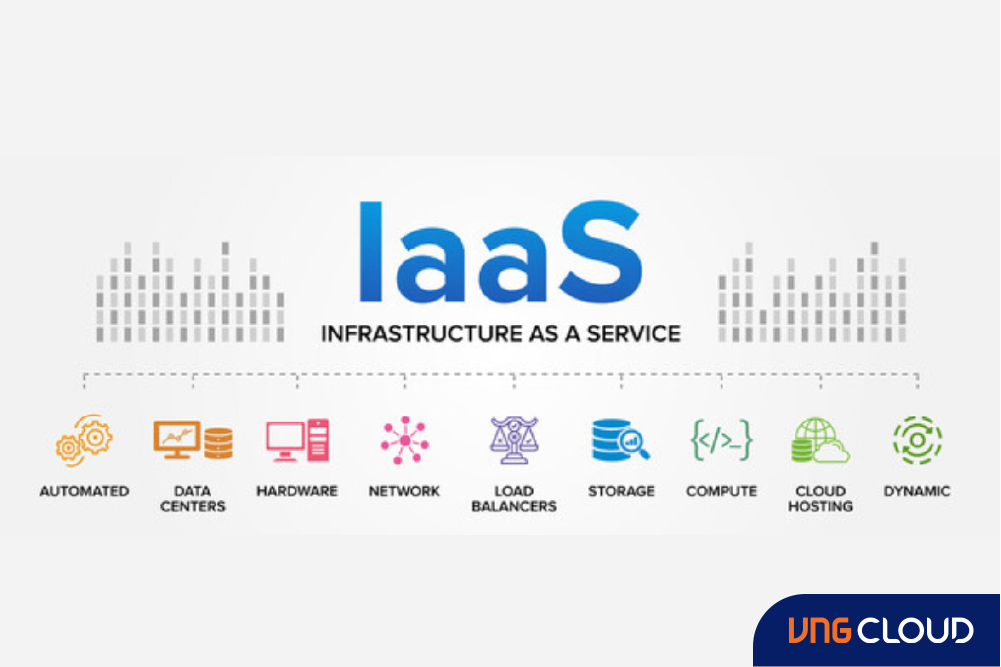
Benefits of IaaS
In comparison to traditional IT, IaaS offers customers greater flexibility to construct computing resources as needed, allowing them to scale these resources up or down in response to fluctuations in traffic. By opting for IaaS, customers can sidestep the initial expenses and overhead associated with procuring and maintaining an on-premises data center. This approach eliminates the ongoing dilemma of either purchasing excessive on-premises capacity to handle traffic spikes or risking poor performance and outages due to insufficient capacity for unexpected bursts or growth.
Additional benefits of IaaS include:
- Higher availability: IaaS enables companies to easily establish redundant servers, even across different geographical locations, ensuring availability during local power outages or physical disasters.
- Lower latency, improved performance: Given that IaaS providers typically operate data centers in multiple geographies, customers can position applications and services closer to users, minimizing latency and optimizing overall performance.
- Improved responsiveness: Customers can swiftly provision resources within minutes, rapidly test new ideas, and promptly roll out innovations to a wider user base.
- Comprehensive security: With elevated security measures on-site, at data centers, and through encryption, organizations often benefit from advanced security and protection, surpassing what they could achieve by hosting the cloud infrastructure in-house.
- Faster access to cutting-edge technology: In a competitive landscape where cloud providers vie to offer the latest technologies, IaaS customers can leverage these innovations much earlier and at a considerably lower cost than implementing them on-premises.
IaaS Use Cases
Typical scenarios where IaaS finds application include:
- Disaster recovery: Instead of establishing redundant servers in multiple locations, IaaS can implement its disaster recovery solution within the existing geographically dispersed infrastructure of the cloud provider.
- E-commerce: IaaS proves to be an excellent choice for online retailers experiencing frequent traffic spikes. The capacity to scale up during peak demand and uphold top-notch security is crucial in the constantly active 24/7 retail industry.
- Internet of Things (IoT) and AI: IaaS simplifies the setup and scalability of data storage and computing resources for applications dealing with substantial volumes of data, such as IoT and AI.
- Startups: Given the financial constraints startups often face, investing capital in on-premises IT infrastructure can be prohibitive. IaaS provides them with access to enterprise-class data center capabilities without the upfront hardware investment and management overhead.
- Software development: IaaS facilitates the rapid establishment of infrastructure for testing and development environments, outpacing the speed achievable with on-premises setups.
Platform as a Service (PaaS)
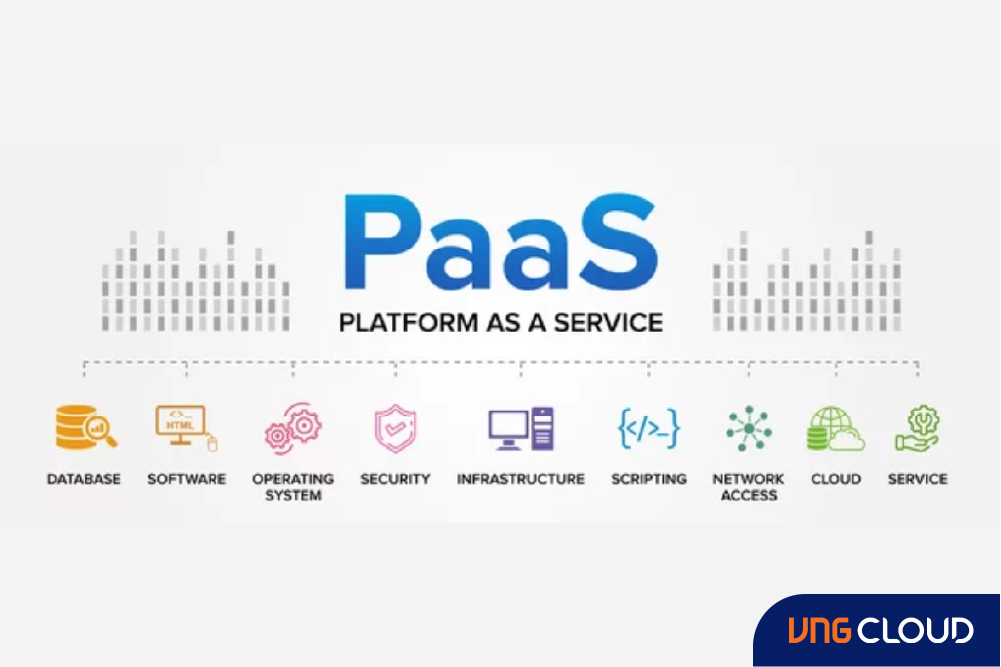
PaaS furnishes a cloud-based platform designed for the development, execution, and management of applications. In this model, the cloud services provider assumes responsibility for hosting, managing, and maintaining all components within the platform, encompassing servers for development, testing, and deployment, operating system (OS) software, storage, networking, databases, middleware, runtimes, frameworks, development tools, and additional services for security, OS and software upgrades, backups, and more.
Users interact with PaaS through a user-friendly graphical user interface (GUI), enabling development or DevOps teams to collaborate seamlessly throughout the entire application lifecycle. This collaboration spans coding, integration, testing, delivery, deployment, and feedback.
Benefits of PaaS
The primary advantage of PaaS lies in its capacity to enable customers to swiftly and cost-effectively build, test, deploy, run, update, and scale applications - capabilities that would be cumbersome and resource-intensive if they had to establish and oversee their own on-premises platform. Additional benefits encompass:
- Faster time to market: PaaS empowers development teams to set up development, testing, and production environments within minutes, a stark contrast to the extended timelines of weeks or months.
- Low- to no-risk testing and adoption of new technologies: PaaS platforms often grant access to a broad array of the latest resources across the entire application stack. This facilitates the testing of new operating systems, languages, and tools without substantial investments, both in the technologies themselves and the infrastructure required to support them.
- Simplified collaboration: Operating as a cloud-based service, PaaS establishes a shared software development environment, granting development and operations teams access to all necessary tools from any location with an internet connection.
- A more scalable approach: With PaaS, organizations can effortlessly acquire additional capacity for building, testing, staging, and running applications as the need arises.
- Less to manage: PaaS shifts the responsibilities of infrastructure management, patches, updates, and other administrative tasks to the cloud service provider, relieving organizations of these operational burdens.
PaaS Use Cases
PaaS advances various development and IT initiatives, including:
- API development and management: Leveraging built-in frameworks, PaaS facilitates the streamlined development, operation, management, and security of APIs. This is particularly advantageous for teams engaged in sharing data and functionality between applications.
- Internet of Things (IoT): PaaS accommodates a diverse array of programming languages (such as Java, Python, Swift) and tools, providing a robust environment for IoT application development and the real-time processing of data emanating from IoT devices.
- Agile development and DevOps: PaaS solutions comprehensively address the requisites of a DevOps toolchain and integrate built-in automation to support continuous integration and continuous delivery (CI/CD), aligning with agile development practices.
- Cloud-native development and Hybrid Cloud strategy: PaaS solutions actively support cloud-native development technologies, including microservices, containers, Kubernetes, and serverless computing. This empowers developers to construct applications once and ensure consistent deployment and management across private cloud, public cloud, and on-premises environments in line with a hybrid cloud strategy.
Software as a Service (SaaS)
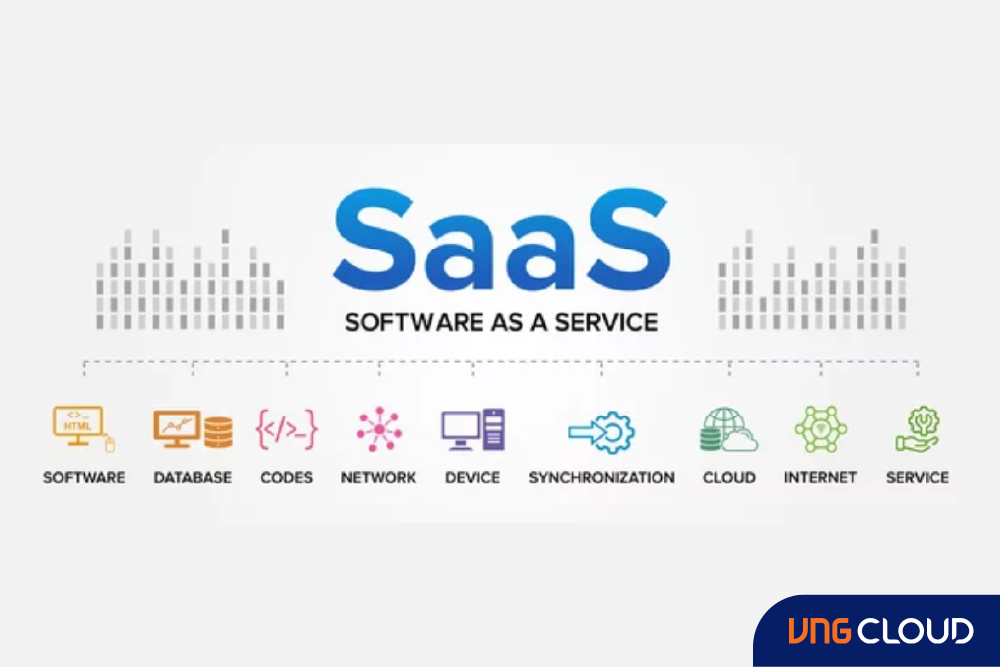
SaaS, also known as cloud application services, entails cloud-hosted application software that is ready for immediate use. Users subscribe to the service through a monthly or annual fee, gaining access to a fully functional application via a web browser, desktop client, or mobile app. The entirety of the application and the underlying infrastructure necessary for its delivery - including servers, storage, networking, middleware, application software, and data storage - are hosted and overseen by the SaaS vendor.
The vendor takes charge of all software upgrades and patches. Typically, the vendor commits to a specified level of availability, performance, and security as outlined in a service level agreement (SLA). Users can expand their usage, adding more users and data storage as needed, with additional costs incurred.
In the present day, virtually anyone using a computer or mobile device likely engages with some form of SaaS. Everyday applications such as email, social media platforms, and cloud file storage services like Dropbox or Box exemplify SaaS use in personal lives. Meanwhile, in the business realm, prominent SaaS solutions encompass Salesforce for customer relationship management, HubSpot for marketing, Trello for workflow management, Slack for collaboration and messaging, and Canva for graphic design. Notably, numerous applications originally designed for desktop use, like Adobe Creative Suite, have transitioned into SaaS models, as seen with Adobe Creative Cloud.
Benefits of SaaS
The primary advantage of SaaS is its ability to delegate all infrastructure and application management responsibilities to the SaaS vendor. Users merely need to create an account, pay the fee, and commence using the application, with the vendor handling various tasks - ranging from maintaining server hardware and software to overseeing user access and security, storing and managing data, implementing upgrades and patches, and more.
Additional benefits of SaaS comprise:
- Minimal risk: Many SaaS products offer either a free trial period or low monthly fees, allowing customers to test the software's suitability for their needs with little or no financial risk.
- Anytime/anywhere productivity: Users can seamlessly engage with SaaS applications on any device equipped with a browser and an internet connection, facilitating productivity irrespective of location.
- Easy scalability: Expanding user access is uncomplicated, involving the simple process of registration and payment for additional seats. Customers can also acquire more data storage as needed for a nominal charge.
- Customization options: Certain SaaS vendors offer the ability to customize their products through companion Iaas/PaaS solutions. An example is when you use VNG Cloud's vCloudcam, you can use additional products such as vServer, vStorage to store camera data.
SaaS Use Cases
In the contemporary landscape, virtually every personal or employee productivity application is accessible as SaaS, and the array of specific use cases is vast (some are outlined above). In the majority of scenarios, when end users or organizations locate a SaaS solution aligning with their functional requirements, it typically delivers a notably simpler, more scalable, and cost-effective alternative to on-premises software.
IaaS vs. PaaS vs. SaaS: Simplicity of Management vs. Level of Control
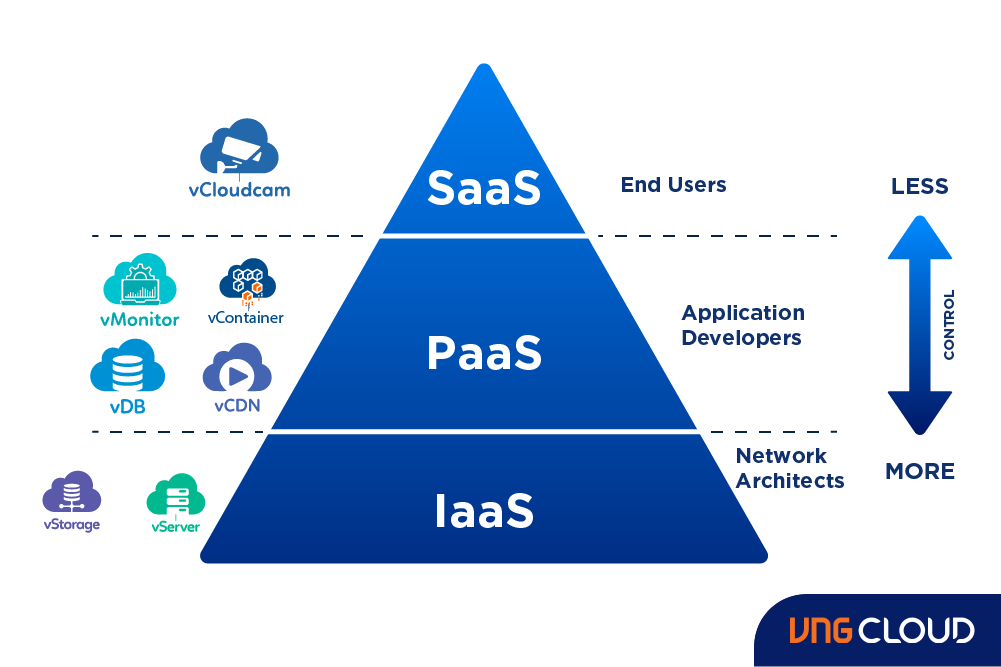
SaaS, PaaS, and IaaS are not mutually exclusive; many organizations utilize a combination of these services, often alongside traditional IT. The choice of an “as-a-service” solution depends on the specific functionality required by the customer and the available in-house expertise. For instance, an organization lacking internal IT expertise for configuring remote servers may not align well with IaaS, while an organization without a development team may not need PaaS.
In certain situations, any of the three “as-a-service” models can present a viable solution. Organizations in such cases typically weigh the alternatives based on the trade-off between the ease of management and the level of control offered.
Consider a scenario where a large organization aims to provide a customer relationship management (CRM) application to its sales team. It could:
- Opt for a SaaS CRM solution, relinquishing day-to-day management to a third-party vendor while sacrificing control over features, functionality, data storage, user access, and security.
- Choose a PaaS solution to construct a custom CRM application. In this instance, the organization would delegate the management of infrastructure and application development resources to the cloud service provider. While maintaining complete control over application features, the organization also assumes responsibility for managing the application and associated data.
- Develop backend IT infrastructure on the cloud using IaaS and use it to create its development platform and application. The organization's IT team would have total control over operating systems and server configurations but would also bear the responsibility of managing and maintaining them, along with the development platform and applications running on them.
IaaS, PaaS, SaaS and VNG Cloud
VNG Cloud offers a comprehensive selection of IaaS, PaaS, and SaaS solutions tailored to meet your company's requirements across various levels of the technology stack. Leveraging VNG Cloud's robust and scalable PaaS solutions facilitates the development of cloud-native applications or the modernization of existing ones. Additionally, our full-stack cloud platform includes a complete IaaS layer, covering virtualized compute, network, and storage capabilities. VNG Cloud further extends its support by providing SaaS business applications, fostering innovation within your organization.